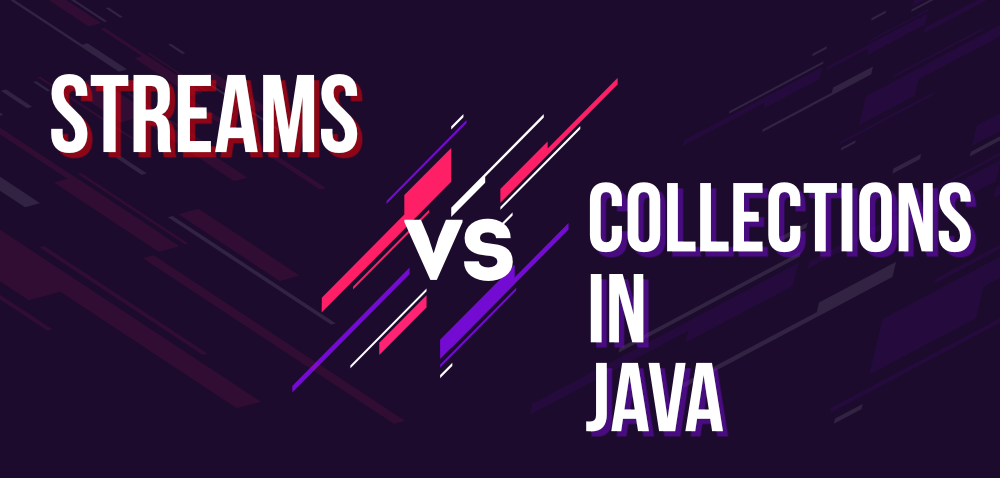Collection是一种内存数据结构,它保存数据结构当前具有的所有值。在我们将它添加到集合之前,必须计算集合中的每个元素。可以对集合进行搜索、排序、插入、操作、删除等操作。它提供了许多接口,如(Set、List、Queue、Deque)和类(ArrayList、Vector、LinkedList、PriorityQueue、HashSet)。

一个流 是一种固定的数据结构,其中元素是按需计算的。 Stream API 用于处理对象集合。流是支持各种方法的对象序列,这些方法可以通过流水线来产生所需的结果。
Java流的特点是:
- 它从集合、数组或 I/O 通道获取输入,而不是数据结构。
- Streams 仅根据流水线方法提供结果,并且不更改原始数据结构。
|
STREAMS |
COLLECTIONS |
|---|---|
| It doesn’t store data, it operates on the source data structure i.e collection. | It stores/holds all the data that the data structure currently has in a particular data structure like Set, List or Map, |
| They use functional interfaces like lambda which makes it a good fit for programming language. | They don’t use functional interfaces. |
| Java Streams are consumable i.e; to traverse the stream, it needs to be created every time. | They are non-consumable i.e; can be traversable multiple times without creating it again. |
| Java streams support both sequential and parallel processing. | It supports parallel processing and parallel processing can be very helpful in achieving high performance. |
| All the Java stream API interfaces and classes are in java.util.stream package. | Specific classes for primitive types such as IntStream, LongStream, and DoubleStream are used in collections since primitive data types such as int, long in the collections using auto-boxing and these operations could take a lot of time. |
| Streams are not modifiable i.e one can’t add or remove elements from streams. | These are modifiable i.e one can easily add to or remove elements from collections. |
| Streams are iterated internally by just mentioning the operations. | Collections are iterated externally using loops. |
集合示例
Java
// Java program to demonstrate
// Collection example
import java.util.*;
import java.io.*;
class CollectionsExample {
public static void main(String[] args)
{
// create an instance of list
List CompanyList = new ArrayList<>();
// add elements
CompanyList.add("Google");
CompanyList.add("Apple");
CompanyList.add("Microsoft");
// create a comparator
Comparator com
= (String o1, String o2) -> o1.compareTo(o2);
// sort the list
Collections.sort(CompanyList, com);
// print the elements
for (String name : CompanyList) {
System.out.println(name);
}
}
} Java
// Java program to demonstrate streams
import java.io.*;
import java.util.*;
class StreamsExample {
public static void main(String[] args)
{
// create a list
List CompanyList = new ArrayList<>();
// add elements
CompanyList.add("Google");
CompanyList.add("Apple");
CompanyList.add("Microsoft");
// sort the list
CompanyList.stream().sorted().forEach(
System.out::println);
}
} 输出
Apple
Google
Microsoft流示例
Java
// Java program to demonstrate streams
import java.io.*;
import java.util.*;
class StreamsExample {
public static void main(String[] args)
{
// create a list
List CompanyList = new ArrayList<>();
// add elements
CompanyList.add("Google");
CompanyList.add("Apple");
CompanyList.add("Microsoft");
// sort the list
CompanyList.stream().sorted().forEach(
System.out::println);
}
}
输出
Apple
Google
Microsoft